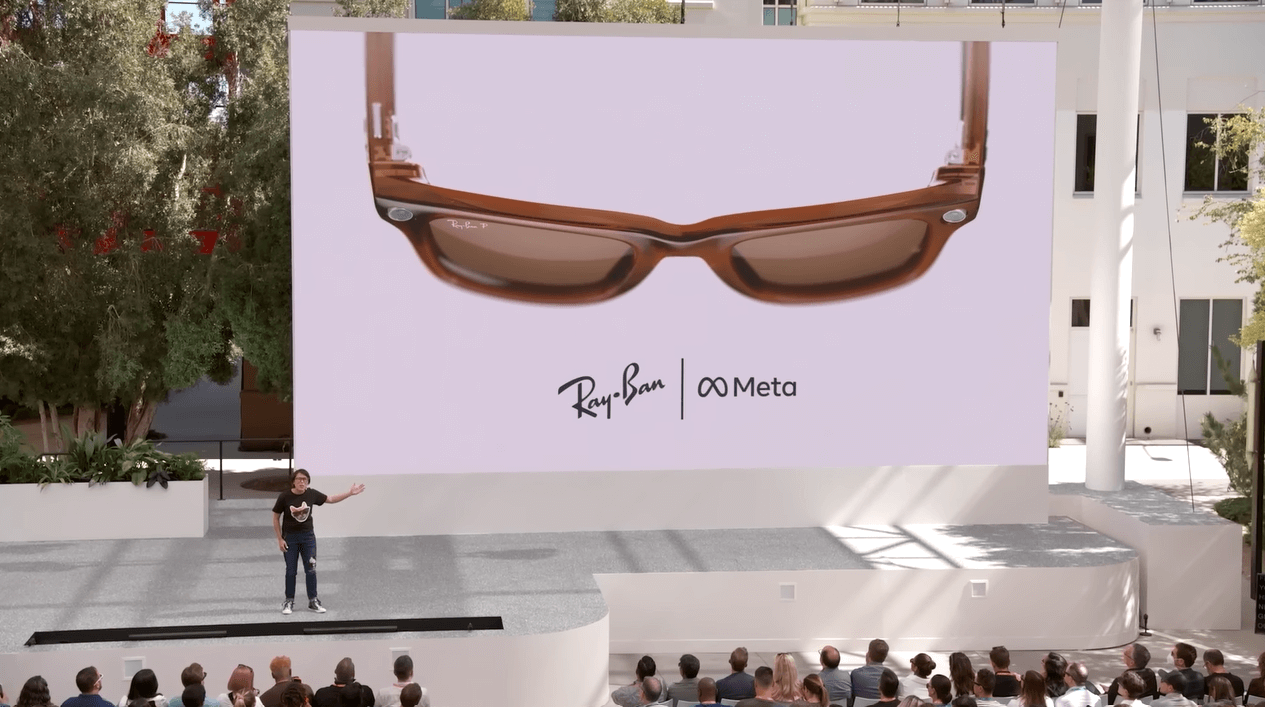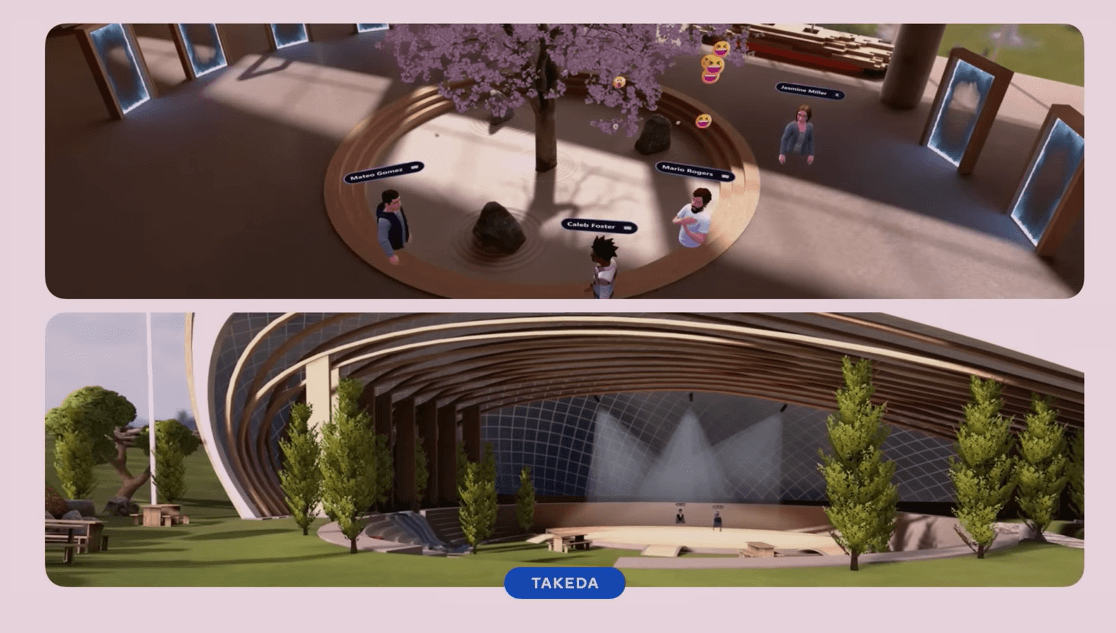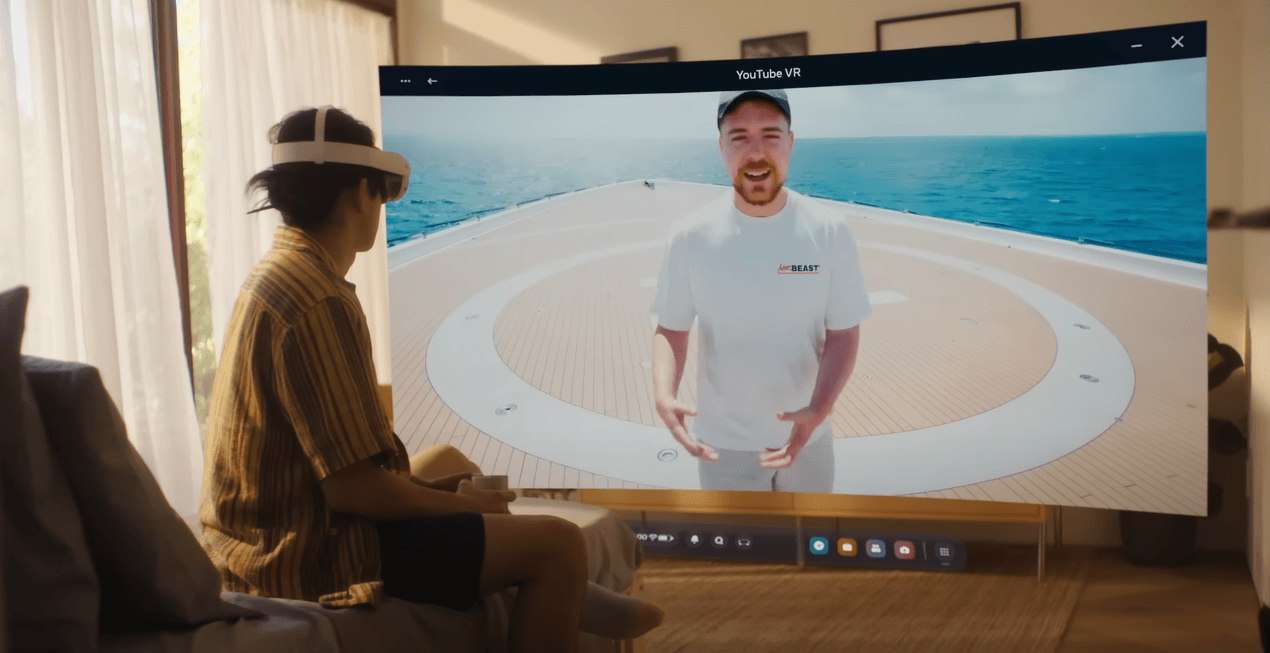In today's rapidly evolving digital age, the future of work stands at the brink of transformation, spurred by the advent of Mixed reality (MR), virtual reality (VR), and artificial intelligence (AI). The metaverse promises to be the next frontier where businesses can innovate, communicate, and create value.
At LineZero, as a strategic partner of Workplace from Meta, we have our fingers on the pulse of these monumental shifts. Our key focus is to illuminate the path for corporations looking to transition into the corporate metaverse, ensuring they are not just spectators but active participants in this new era of work. This summary delves deep into the insights gleaned from Meta Connect 2023, shedding light on the groundbreaking innovations presented by Meta and their implications for businesses worldwide.
In this blog, you will find:
🔍 Initial takeaway on Meta's efforts in the industry of MR, AI, and VR
🕶 Integration of Augmented Reality in Everyday Life: Ray Ban Meta Smart Glasses
🚀 Metaverse Discussions at Meta Connect
🛠 Incorporating Meta's New Hardware into Business Operations
What is Meta Connect?
Meta Connect is Meta's annual Everything Conference. It's where they discuss their B2C (business to consumer) and B2B (business to business) investments, new technologies, industry trends, and Meta's role within these developments. LineZero was fortunate to attend this exclusive event in person, an event with less than one thousand invite-only attendees. It was truly special to see Mark Zuckerberg and his team present their vision for the upcoming years in person.
Initial takeaway on Meta's efforts in the industry of mixed reality (MR), AI, and VR
Mixed Reality and the Quest 3 Evolution:
Their announcements spanned mixed reality, artificial intelligence, and their Ray-Ban Glasses—smart glasses that are a fusion of AR, VR, and AI technologies. Several takeaways stood out. Starting with mixed reality, their developments in the Quest 3 device are noteworthy. While its design is reminiscent of previous generations, subtle alterations significantly change the user experience. The inclusion of cameras on the lens means that users immediately see their surroundings upon wearing the device. This gives them the choice of when to dive into an augmented, mixed, or virtual reality. This feature makes the experience more inviting, user-friendly, and adaptable for newcomers.
As for technical upgrades, improved graphics performance and higher pixel resolution will likely benefit use cases like technical design and virtual lens simulations.
META'S EFFORTS IN THE REALMS OF MIXED REALITY, AI, AND VR:
In terms of AI, Meta's contributions have been somewhat overshadowed by news about, Open AI, BARD and Google. However, in the large language model (LLM) arena, the main players are Google, Meta, and Microsoft (with OpenAI's Chat GPT). Meta introduced several tools, including Code Llama, an LLM designed to assist developers with coding, debugging, and other tasks. This tool emphasizes the potential of specialized LLMs tailored for specific business use cases, such as enhancing customer interaction.

Meta's Ray-Ban Glasses: A Convergence of AI and Mixed Reality:
Regarding their Ray-Ban Glasses, the convergence of various technologies is genuinely groundbreaking.
The glasses are incredible tools. As Mark Zuckerberg pointed out, they allow AI to see what we see and hear what we hear, giving AI its first real opportunity to operate contextually based on our surroundings. Imagine wearing these glasses and looking at a structure, say the CN Tower, and asking, "What is this building?" The glasses, being contextually aware, would provide a response like, "That's the CN Tower, built in 1970. It's this tall, and here are some interesting facts about it." This showcases the potential of comfortably integrating AI and mixed reality with computer vision into our everyday lives. Meta did an exemplary job explaining how these technologies intersect and the influence they'll have on both our personal and professional lives.
Integration of Augmented Reality in Everyday Life: Ray Ban Meta Smart Glasses
We were presented with a vision where we enter a meeting room where some attendees are physically present, and others are virtually and spatially represented. While it's been challenging to imagine a true blend of physical and digital presence, the Ray-Ban glasses offer a glimpse into a not-so-distant future. It's not far-fetched to consider wearing glasses that adjust their tint based on sunlight and also incorporate advanced tech, offering a genuine hybrid experience. This would enable remote participants to engage as if they were in the room, even in activities like whiteboarding, which currently lacks a fulfilling virtual alternative.
Predicting how companies will manage continuous AR access by employees is still speculative. Decades ago, we could have asked similar questions about consistent computer or smartphone usage. Ultimately, I believe the outcome will be beneficial, though we'll need checks and balances, especially regarding work-life boundaries. Imagine the challenges if prescription eyewear doubles as a communication device that's always on.
The Future of Training and Onboarding with AR and VR
As for how training for new employees might evolve with Quest 3 and Ray Ban glasses: AR and VR have strong potential for employee onboarding, which primarily revolves around training. Effective onboarding means acquainting new hires with company culture, operations, procedures, and teammates. The quicker this happens, the faster they become productive. AR, VR headsets and AI could significantly expedite this process. Imagine seeking information with a simple query to your smart glasses and receiving an immediate response. This shift may alter training from imparting knowledge to teaching how to seek it. The focus might shift from where to find information to how to ask for it. The implications for training, onboarding, and various other applications are vast and exciting.

Metaverse Discussions at Meta Connect
I believe the metaverse is still in its infancy. Many companies may not have fully grasped how to best harness its potential. However, the fundamental thinking on how companies can interact with the metaverse remains largely consistent. It's believed there won't be just one metaverse but multiple ones, allowing consumers the choice of how and when to engage with them. Some of these metaverses, like the gaming experience in Fortnite, already exist and can be likened to early metaverse interactions. You might also consider a virtual shopping mall with various branded stores as individual mini-metaverses. While it's still early days, advancements in technology, like the Ray Bans, will likely expedite adoption. Currently, the market may not be substantial enough to prompt major corporations to establish a presence.

Incorporating Meta's New Hardware into Business Operations
Is the Technology Ready for Business?
Broadly speaking, this technology is ready for implementation, and companies could derive value from deploying it right away. However, it's crucial to note that it's best suited for specific use cases like learning & development, DEI (diversity, equity, and inclusion) initiatives, and design. These areas have matured, boasting a plethora of applications that can aid in training, uphold DEI values, and bolster design and architecture processes. As for collaboration and communication, there's still some evolution required. Comprehensive adoption, especially for communication, might necessitate a ubiquitous deployment of mixed reality tech. While that might be a distant goal, companies that prioritize training, DEI, and design should seriously consider integrating these tools now.

How Can Companies Ensure Data Security and Privacy in the Age of AR, VR, and AI?
Privacy is undoubtedly a complex issue. While the development of these technologies is largely transparent, it is also fraught with challenges as individuals push their boundaries. Such explorations, however beneficial for technological improvement, sometimes lead to issues like biases. As the tech and industry mature, they seem to be heading in the right direction concerning data protection and privacy.
Additionally, companies need to develop and apply their own unique policies. For instance, if a company requests employees to create digital avatars of themselves, what happens to these avatars upon an employee's departure? Do they get deleted, or can the employee retain them? These are just a few of the myriad questions companies need to consider as they delve deeper into this technological frontier.
Related blogs you might be interested in:
Meta's Real-World Applications of the Metaverse | News Oct 2023
What Are The Meetings in The Metaverse? | The Future of Virtual Office
What Does the Metaverse Mean for Businesses?
Conclusion
Meta Connect 2023 has provided a compelling vision for the next phase of digital evolution. With Meta's technological advancements in the realms of AR, VR, AI, and the metaverse, businesses are provided with novel tools to reimagine their operations, employee interactions, training methodologies, and customer engagements. At LineZero, our mission remains unwavering: to guide companies on this transformative journey. As we stand on the cusp of a new digital dawn, we are committed to helping businesses seamlessly integrate and thrive within the corporate metaverse.
Are you ready to be part of the future of work?
The future of work is with LineZero! We are a trusted partner with Meta, and we can help you be prepared for the Metaverse and the future of work while boosting internal communications and enhancing the employee experience.
Tags:
Corporate Metaverse
October 20, 2023




Comments